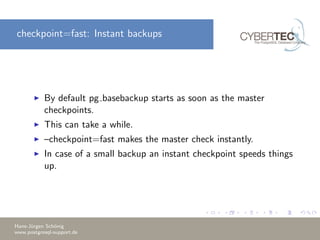

- Postgres on update cascade how to#
- Postgres on update cascade code#
- Postgres on update cascade plus#
Postgres on update cascade plus#
n_distinct affects the statistics for the table itself, while n_distinct_inherited affects the statistics gathered for the table plus its inheritance children. Currently, the only defined per-attribute options are n_distinct and n_distinct_inherited, which override the number-of-distinct-values estimates made by subsequent ANALYZE operations. This form sets or resets per-attribute options. SET STATISTICS acquires a SHARE UPDATE EXCLUSIVE lock. For more information on the use of statistics by the PostgreSQL query planner, refer to Section 14.2. The target can be set in the range 0 to 10000 alternatively, set it to -1 to revert to using the system default statistics target ( default_statistics_target).

This form sets the per-column statistics-gathering target for subsequent ANALYZE operations. sequence_option is an option supported by ALTER SEQUENCE such as INCREMENT BY. These forms alter the sequence that underlies an existing identity column. If DROP IDENTITY IF EXISTS is specified and the column is not an identity column, no error is thrown. Like SET DEFAULT, these forms only affect the behavior of subsequent INSERT and UPDATE commands they do not cause rows already in the table to change. These forms change whether a column is an identity column or change the generation attribute of an existing identity column. RENAME CONSTRAINT constraint_name TO new_constraint_nameĪLTER TABLE ALL IN TABLESPACE name ]ĪTTACH PARTITION partition_name AS IDENTITY You should be able to work from that to make only the changes that you want in your database.ALTER TABLE name
Postgres on update cascade code#
This code will drop and create ALL FK constraints in a database.

You can select from that table to get all the information you need.Ī post from John Paul Cook can be found here: This takes a bit of effort, but would result in your constraint being properly set for your case.ĮDIT 2: The information that you need is found in sys.foreign_keys.
Postgres on update cascade how to#
From the > documentation on about ALTER TABLE it's not at > all clear how to do this or even whether you can do this. , delete_referential_action, update_referential_action, OBJECT_SCHEMA_NAME(referenced_object_id)įETCH NEXT FROM FKcursor INTO = 0 On Wed, at 11:32:32AM -0500, Aram Fingal wrote: > I have a table where I should have declared a foreign key with ON > UPDATE CASCADE and didn't. , is_disabled, is_not_for_replication, is_not_trusted , OBJECT_NAME(parent_object_id), name, OBJECT_NAME(referenced_object_id) Select OBJECT_SCHEMA_NAME(parent_object_id) In order to script out creation or dropping of all foreign keys in your schema run the following script (taken from here) DECLARE sysname Problem is, it errors out at modify as it does not recognize the keyword. How can I update the foreign keys to make them ON CASCADE UPDATE ? 103 I have checked the documentation provided by Oracle and found a way to modify a constraint without dropping the table. Thus NO ACTION is taken after updating my primary keys columns. , I see that update_referential_action is set to 0. When I run followinq query select * from sys.foreign_keys where referenced_object_id=OBJECT_ID('myTable') Is it possible to update a primary key column value with cascading the update among all the foreign keys referencing it ?


 0 kommentar(er)
0 kommentar(er)
